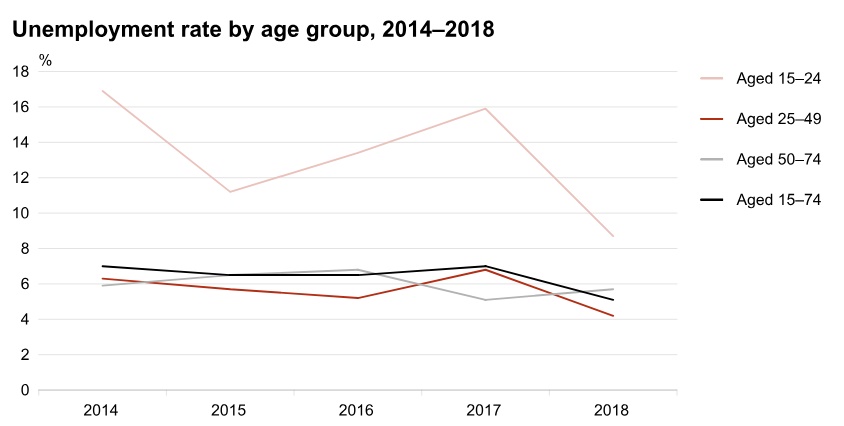Analytics, Employment, Good for Business, Labour-market, Statistics
International Internet Magazine. Baltic States news & analytics
Wednesday, 24.12.2025, 03:59
Unemployment decreased rapidly in Estonia
 Print version
Print versionIn the 2nd quarter of 2018, the estimated number of unemployed persons was 35,800 and the unemployment rate was 5.1%, which is the lowest rate in ten years. Compared to the 2nd quarter of 2017 when the number of unemployed persons was relatively high, there were 13,200 fewer unemployed persons and the unemployment rate was 1.9 percentage points lower. Even though the total number of unemployed persons decreased rapidly, the number of very long-term unemployed increased slightly. 7,600 people had been seeking work for 24 months or longer.
The number of discouraged persons (those who have lost hope of
finding a job) was stable (5,000). The unemployment rate for Estonians was 4.3%
and for non-Estonians 6.7%.
In the 2nd quarter of 2018, there were 666,600 employed persons, and the
employment rate was 68.2%, which is 1.3 percentage points higher than in the
same quarter last year. Compared to the situation a year ago, the number of
employed persons increased by 13,100, mainly on account of part-time
employment. 12.5% of the persons employed were employed part time and 87.5%
worked full time. 8,000 persons employed part time wanted to work more, i.e.
were underemployed. The number of employees increased by 7,700 and the number
of own-account workers by 5,000. Among 25–54-year-old people, which is the most
active age group in the labour market, the employment rate for men was 90.2%
and for women 77.9%.
274,400 persons were inactive (cannot or do not wish to work). The main
reasons for staying off the labour market were still retirement (90,400),
studies (64,200) and illness or disability (58,200). Slightly more people than
a year ago were inactive due to illness or disability. The number of persons
inactive due to retirement or studies stayed at the same level.
The labour force participation rate (the share of working-age population
who are employed or looking for a job) was 71.9%, which is only 0.1 percentage
points lower than a year ago, when the rate was at its highest level in 20
years. While in the 2nd quarter of 2018 there has been almost no change in the
economic activity rate compared to the 2nd quarter of 2017, the labour market
situation has still somewhat changed: the number of persons seeking work has
decreased and the number of persons employed has increased. As expected, the
population of northern Estonia was the most economically active. 77.1% of the
working-age population there were able to work and at the same time also wished
to work, the employment rate was 74.6% and the unemployment rate 3.2%.









 «The Baltic Course» Is Sold and Stays in Business!
«The Baltic Course» Is Sold and Stays in Business!

